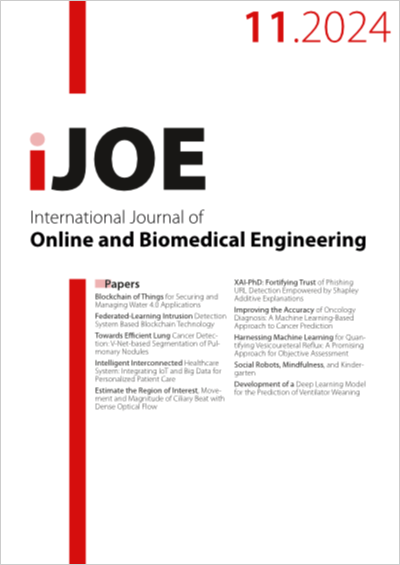XAI-PhD: Fortifying Trust of Phishing URL Detection Empowered by Shapley Additive Explanations
DOI:
https://doi.org/10.3991/ijoe.v20i11.49533Keywords:
Cybersecurity, Machine Learning, Explainable AI, Phishing Detection; Feature Engineering; Malicious URLs; SHapley Additive exPlanations (SHAP).Abstract
The rapid growth of the Internet has led to an increased demand for online services. However, this surge in online activity has also brought about a new threat: phishing attacks. Phishing is a type of cyberattack that utilizes social engineering techniques and technological manipulations to steal crucial information from unsuspecting individuals. Consequently, there is a rising necessity to create dependable phishing URL detection models that can effectively identify phishing URLs with enhanced accuracy and reduced prediction overhead. This study introduces XAI-PhD, an innovative phishing detection method that utilizes machine learning (ML) and Shapley additive explanation (SHAP) capabilities. Specifically, XAI-PhD utilizes SHAP to thoroughly analyze the significance of each feature in influencing the decision-making process of the classifier. By selectively incorporating input characteristics based on their SHAP values, only the most crucial attributes are assessed, enabling the development of a highly adaptable and generalized model. XAI-PhD utilizes a lightweight gradient boosting machine as its classifier, and a series of rigorous tests are conducted to assess its performance compared to established baseline methods. The empirical findings unequivocally demonstrate the exceptional effectiveness of XAI-PhD, as evidenced by its remarkable accuracy and F1-score of 99.8% and 99%, respectively. Moreover, XAI-PhD exhibits high computational efficiency, requiring only 1.47 milliseconds and 18.5 microseconds per record to generate accurate predictions.
Downloads
Published
How to Cite
Issue
Section
License
Copyright (c) 2024 Mustafa Al-Fayoumi, Bushra Alhijawi, Qasem Abu Al-Haija, Rakan Armoush

This work is licensed under a Creative Commons Attribution 4.0 International License.



